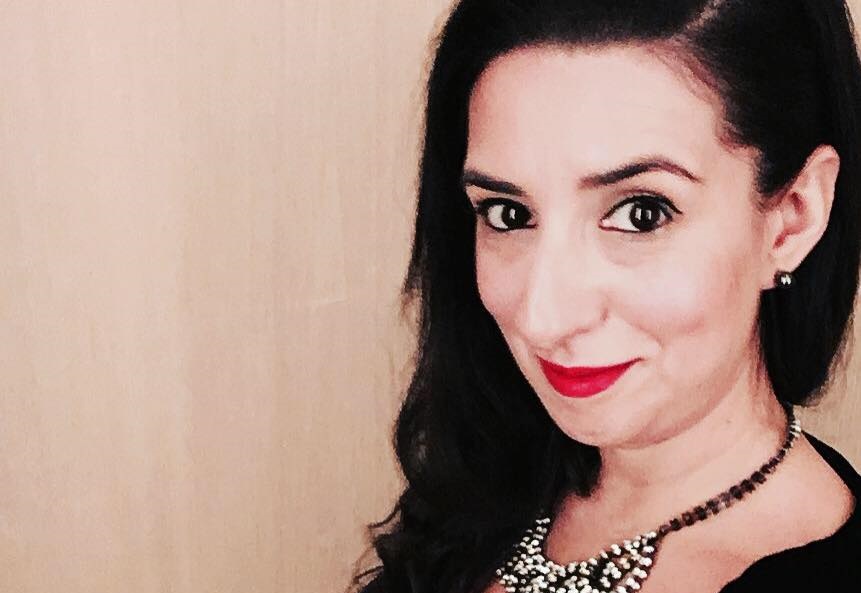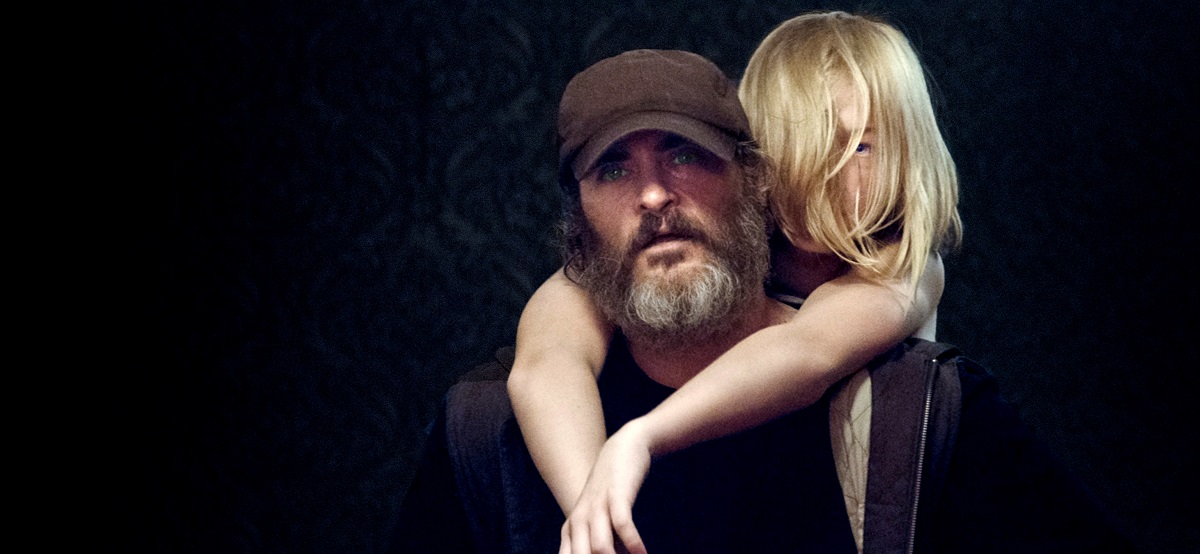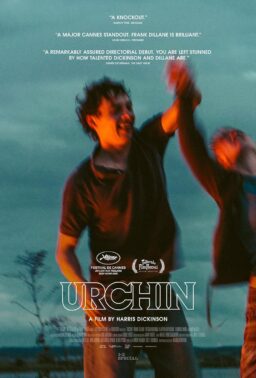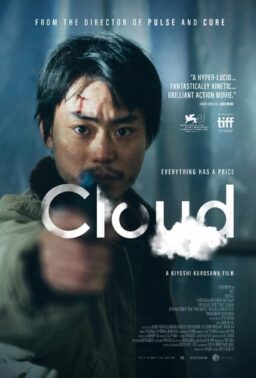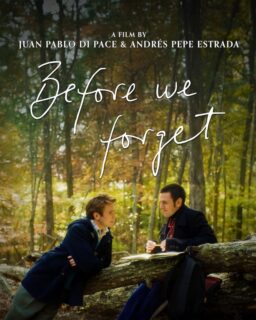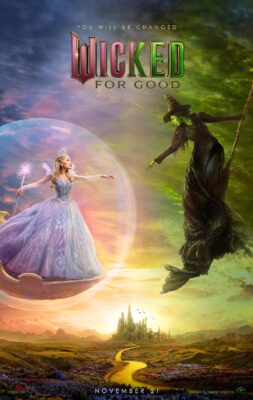A true master of psychologically charged dramas, Scottish auteur Lynne Ramsay is back after a long pause following 2011’s astonishing thriller “We Need to Talk About Kevin.” Her finest and most structurally adventurous effort to date, Ramsay’s latest film “You Were Never Really Here” is both new territory for the writer/director (it can be loosely seen as a violent, Park Chan-wook-esque action-thriller of sorts with a trauma-ridden, hammer-wielding antihero at the center) as well as her usual psychodrama terrain, filled with scarred human beings. But don’t let that word “action” fool you, as this is action à la Ramsay of “Ratcatcher” and “Morvern Callar”: minimalist, slow-burning and more about what it hides rather than what it puts on display.
Adapted from Jonathan Ames’ NYC-based novella by Ramsay, “You Were Never Really Here” follows the bruised, quietly intense Joe (Joaquin Phoenix), a former soldier who now works as an agent-for-hire to retrieve young women sold to sex trafficking. When he is sent to rescue Nina (Ekaterina Samsonov), the daughter of a high-powered politician, from a midtown brothel in his latest job, Joe battles his way through the complex trenches of corruption and unimaginable violence while lovingly caring for his frail mother on the side and fighting his own psychological demons.
In portraying the intensity of Joe’s physical and emotional struggle, Ramsay pitches him in a hazy place between life and death, haunted by traumatic memories of the past: an abusive father, unforgiving battlegrounds, former jobs that collectively take their toll, among them. Alongside her editor Joe Bini, Ramsay uncovers these scars in small, staccato dozes and refrains from spelling out too much. “I trusted the audience that they would fill in some of the things that you’re normally told, or spoon-fed, while still [making] a kind of propulsive film that went forward,” she recently tells me about “You Were Never Really Here,” which competed in the 70th Cannes Film Festival last year and won Joaquin Phoenix the Best Actor Award, and Ramsay, the Best Screenplay honors (which she shared with Yorgos Lanthimos for “The Killing of A Sacred Deer.”) “[What you don’t show] also leaves a lot of room for the imagination.” Below, we delve deep into her film’s themes and how she approached the material from her own unique lens.
Last year was my first time in Cannes. I went all the way there, and sadly returned back to New York before seeing the best film in competition, which was your film.
Oh, thanks very much.
I sadly missed the last two days of the festival. Being a rookie, I thought they wouldn’t screen anything new at that point and returned early.
[Laughs] Yeah, I was totally pissed off they put it on the last night.

I’ve seen the film twice now. And both times, it completely wrecked me and left me in a state of trance. This might be a little vague, but I wonder if you, as a filmmaker, anticipate or aim for a specific kind of emotional reaction as you craft your film.
I suppose you don’t completely know. You can just only make something that is affecting to you. But, I suppose the funny thing about Cannes was, my sister was in the audience with some friends, not filmmakers. Some people were crying. I was kind of surprised by this state of shock, because I’ve just been editing it. I guess that you just hope you’ve immersed people enough in a world. And that’s why I love going to the cinema. I go in, sit in a film. [When I] walk out of the cinema, [I feel like] I’m still in the film, you know?
This was such a fast film to make. So fast and furious and crazy; there was a lot of energy in it. Especially at Cannes, I didn’t have a point to sit back and go, “Well, here’s the film.” And not more than six people had seen it and then there’s 2,500 people in an audience. And I remember in that screening, sitting thinking, “A really big screen with brilliant speakers! Ah, this is quite nice.”
The basic thing at Cannes, for me was the reaction of the audience, rather than any prizes. You could feel them go with it. You could feel that tension. You could feel people laughing and getting emotionally involved. So that was actually really a moment I won’t ever forget. Because it was the first time I’d seen the film with an audience.
It really makes the difference when there’s a crowd around you reacting to the same film. There is this big debate going on right now around theatrical vs. streaming. But I really feel you can’t put a price on that shared experience.
Yeah, there’s something about the collective experience and being in that cinema together. That vibe [is] what makes the cinema special.
From “Ratcatcher” to “Morvern Callar” and “We Need to Talk About Kevin,” it seems to me like you are interested in visualizing the abstract headspaces of your characters. This, to me, is most evident in “You Were Never Really Here.” Do you find yourself gravitate towards material that would allow you to achieve this?
I suppose every filmmaker, at least the filmmakers I really like, are amateur psychologists to a degree. Or they come from a psychological approach, I guess. I mean, filmmakers like [Ingmar] Bergman or [Stanley] Kubrick. They always try to uncover what’s going on in the mind. To me, most filmmaking is a kind of visualization of how people are. The dark, the light, the absurdity of life, all the crazy things, you know? So all of the characters that I’ve made have been really close to my heart. I guess what I’m interested in is just visualizing a really three-dimensional picture of a person.
Joe [Joaquin Phoenix] seemed to be stuck in a space between life and death, and he kind of experiments with overstepping that boundary a little bit. It just got me thinking; death is something so near, and it is scarily easy to attain. That thought frightened me a little bit.
I think the film can be kind of scary in the sense that a lot of things are unexpected in it. You don’t know what he’s going to do next. But there’s hopefulness as well. There’s a kind of idea of him coming back to life and being more present, in a way. He is like a ghost in his own life, at the beginning, and he’s like the walking dead [man]. So in the end, he’s not the knight in shining armor. He’s a fallible man who has totally failed in everything. It’s against the trope of this kind of movie. But, yeah, I think there is something at the end (without giving spoilers) that feels more hopeful.

Yes, you definitely leave the story on an unexpectedly bright and hopeful note.
Even if it’s slightly surreal, there’s still this naivety. But he doesn’t save her, she saves herself, and that never happens in one of these kinds of movies. In fact, I’d love to explore the idea of Joe being a fantasy projection of Nina’s. But yeah, there [are] some scary things in this film—it doesn’t tell you how to feel. Here’s a scene [in which] he’s angry. Or here’s a scene [in which] he’s this or that. He’s one of those characters that are essentially good, but so many things have made him a mess. It’s almost like a Francis Bacon painting. That’s what my friend Samantha Morton (who was “Morvern Callar”) [said]. She came to see the film and said [it] was like a cinematic equivalent of a Francis Bacon painting. And there’s something scary in those paintings; there’s something alive, violent and sexual. So I thought that was a really good way of describing it.
The most fascinating part of this process is when you hear people’s interpretations. It can sometimes really surprise you, and you can see there are many different things this film is to different people.
I want to go back to what you said, about Nina saving herself. That goes hand-in-hand, in my opinion, with your film’s idea of masculinity. He might be the hammer-wielding tough guy, but she is the one with the agency. You allow us to see her strength and his vulnerability, even fragility. I especially loved the human moments between Joe and his mother.
Yeah, [balancing these] was a bit of a process; one of the things I’d liked in the original material, which I was able to be very free with. I told the writer I’d never made a straight adaptation, and I wanted to go my own way. So [one thing] I really liked, and I explored much more in the film than were in the original material was the relationship with his mom. And then Joaquin came into that as well. And I’d always thought about Joaquin [for this role], because I felt he could give a vulnerability to this character, and it wouldn’t be that six pack guy who is invincible. In fact, I wanted it to be the total opposite of that—he’s kind of falling apart. To me, that makes [for] a much more empathetic character. Like you say, more human, rather than this thing where it feels like you’re watching something that ticks all the boxes.
I love the tender scene when he touched, caressed, his mom’s foot.
Really strangely, it came up that there was something like that in my first feature film, “Ratcatcher,” where he touches his mom’s feet. And I’ve totally forgotten about [it]. But I like showing love in the details. That one shot can say everything, rather than you could have 10 scenes to say that. Also, we had so little time to shoot this. It was about the economy I could use: how to really boil down images that would be significant and say a lot about their relationship.
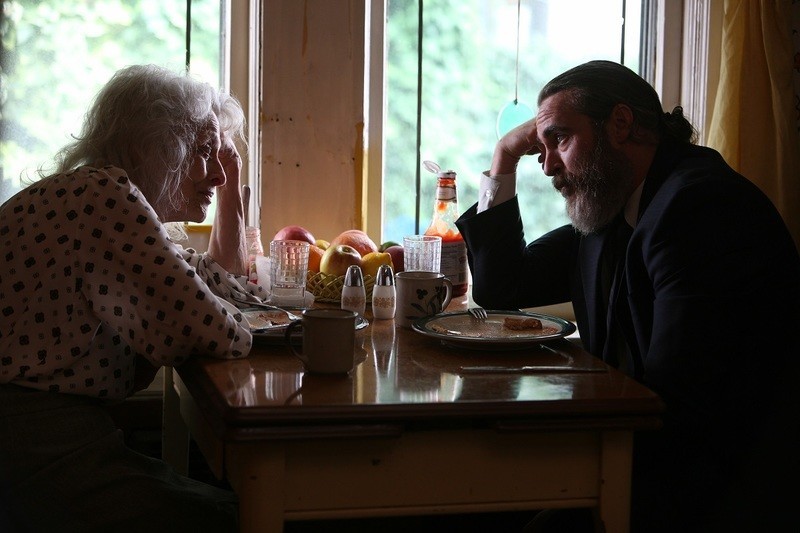
And that economy was very persistent throughout this movie. You gave the audience enough to piece things together through an almost experimental editing style.
I feel like audiences are pretty sophisticated these days. They see really amazing TV and I hate being handheld through a movie about how I should feel, by music [or other things]. To me, that’s not that interesting or exciting. I think that people can fill in the gaps. Sometimes what you don’t show creates more of a mystery. I’d never done anything in action. I’ve never done a sort of film that has action sequences or guns in it. So it was pretty terrifying. I was like, “If I show these sequences, what are they?” I was trying to kind of break down what it meant. And I didn’t have a long time to shoot stuff, so I couldn’t do this big, balletic, lovely action sequences that you sometimes see in great movies.
But, in a way, it was interesting. I would have half a day to shoot something I thought I would have four. And that brought about things, like the surveillance camera idea.
I was just going to get to that—one of my favorite sequences in the film. Sounds like part of it was necessity too.
I thought, “Maybe there’s a lateral way of thinking about this.” I’d been watching a lot of stuff on YouTube, and a lot of off-screen violence, where you see a hand, or something. To me, it was more effective and powerful. So I did a little experiment during prep … It was risky. I’ve never had re-shoots ever, in any of my movies, so it was like, “I have to get it right then and there.”
I felt the violence starts really mechanical in the night. And that suited it. It had a very mechanical nature. And then it becomes more personal, physically personal, and also emotionally personal. And then it’s sort of post-violence. You don’t need to see what happened to know what he’s done. Most of those sequences came from how I was thinking about where the character was at, at that time in the film.
It was a bit of necessity [too], but I could’ve cut it and shot it a different way. So it was taking a gamble. But I think it came from that feeling, “Okay, how can I do this in a really precise way within the time I’ve got?” And also, you’re meeting your stunts guys. They’ve done different kinds of action films and they want to show you all their fancy moves, and the different ways you can hit someone with a hammer. And I’m like, “No, no. That’s totally not what I want.” You know what I mean? No fancy moves.
You were interested in doing something else.
Exactly. I worked with a really good guy. And he started to understand what I wanted. So I tested it with stuntmen so that they knew where I was coming from. That I wasn’t going to do it like anything else they’d done. So I did a test. And then I think I time-sliced some of the music out, by accident. And then that made me think later on in the edit that I would do that, with that track “Angel Baby,” which was the first thing I tried. As the camera cuts, the music cuts, and then it jumps forward. So that was really interesting, ’cause it does something to your subconscious, sound-wise, where it makes you tense, even though you don’t really know why. So it was a lot of serendipity.

But it did make a lot of sense, the way you cut the music. Because we’re coming to it from different vantage points, and maybe going back a couple of seconds or going forward a second. And yes, it was tense. I couldn’t breathe throughout that entire sequence.
I was very excited about it when we did it. The risk factor, but also [thinking], “I feel it’s gonna work.” And I remember the editor called me, and [said], “Oh my God, this sequence!” We’d normally get continuous music to paper over the cracks. This was the antithesis of that.
I really think about sound and music when I’m early on in the process because of what they do to your subconscious. It’s not just put on at the end, for me. Even when we do a cut, we do sound work after a cut [to] inform the next cut. I’d get the music from Jonny Greenwood and I would re-cut to the music. So, it was very organic. It wasn’t a very conventional method.
One of the inevitable dimensions of this movie, for me, is the trauma the young woman, Nina, will have to live with for the rest of her life. The scars she will have to carry. From that perspective, I feel like your film arrives at a very interesting moment in time, with #MeToo and #TimesUp movements and all the conversations we’re having around them.
It is a very strange time. Although this is essentially a character study of him, I did want to give her some agency, and I did. There have been a lot of abuses of power, and this film does have some of those elements in it: it’s about powerful men, beyond reproach. But I think that’s starting to change. It’s like the fall of the Roman Empire; the pieces are coming away.
My first film was about a little boy, in a very macho environment, who was very sensitive. And my second film, “Morvern Callar,” [has a female who’s] just irreverent. She’s grieving, but she takes a lot of agency. She takes the money from her dead boyfriend’s book. And there’s Tilda [Swinton], a mother who didn’t know if she liked her son. It’s hard to say what these [collectively] mean, but I guess I’m a filmmaker first, and then I just happen to be a woman. But, I’m definitely interested in just exploring … I don’t feel like anything’s off bounds for me.
Sometimes, people have asked me, “What does it feel like to be [a female director] (and I know you’re not asking that).” I think when it gets to the point where they’re asking guys, “What’s it like to be a male filmmaker,” maybe we’ll be getting somewhere. But we’ve got a long way to go. It’s just the beginning. Sometimes you think, we haven’t come that far from the ’70s. The amount of women directors in the world, when I first started, was 2%. But it’s not just gender. It’s more like the culture. You need a variety of voices to make it a really interesting world, or to [have] interesting films. There’s always been the domain of white, middle class guys. But that is changing I think.
I think so too. At a slow pace maybe, but it is changing.
Yeah. We gotta be optimistic.
